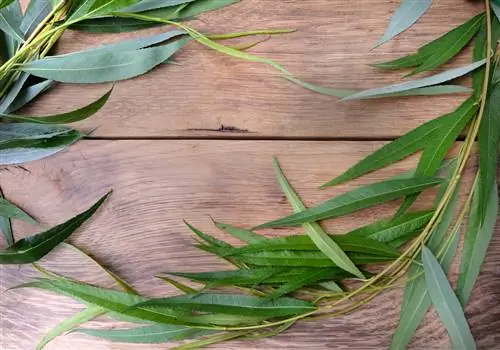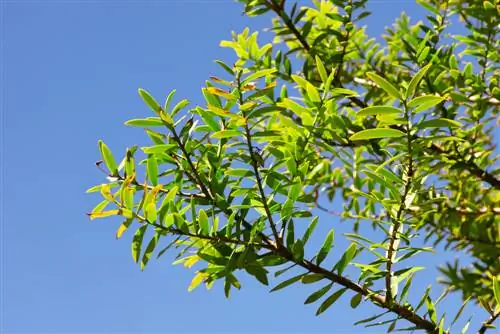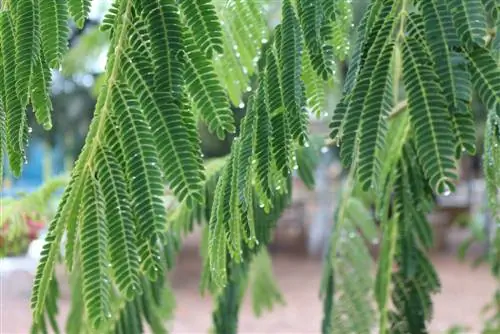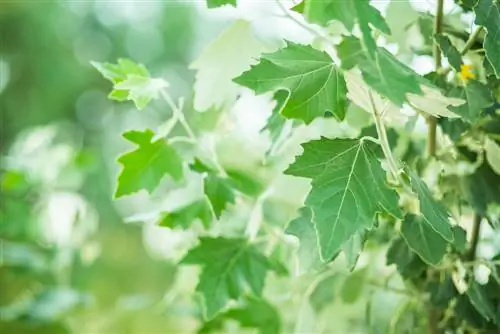- Author admin [email protected].
- Public 2023-12-25 17:45.
- Last modified 2025-01-23 11:21.
Pretty much every component of the pasture has certain advantages and notable special features. Your healing tea is made from the bark, and baskets and fences can be made from the branches. On this page you will find out what benefits you can get from willow leaves. You will also learn to distinguish between the different willow species based on the shape of the leaf.

What are willow leaves useful for?
Willow leaves are available in various shapes such as round, lanceolate and tapered and are usually light green. They are rich in salicin, which has pain-relieving and antipyretic effects. In autumn they fall off as leaves and can be used as natural fertilizer.
Optical features
- significant differences from species to species
- round, lancet-shaped and narrow, tapering shapes are possible
- Underside of leaf mostly hairy
- mostly light green
Special features of the white willow
In terms of the characteristics of the leaf, the white willow (Salix alba) is particularly noteworthy. After all, the tree owes its name to its leaves. The foliage has a fluff of fine, white hairs on the upper side, but especially on the underside. These shimmer silver, especially in the wind.
More differences between different species
You can use the following characteristics as a guide if you want to distinguish between different types of willow.
Hooker's Pasture
- ovoid
- dark green
- fest
- shiny
- up to 10 cm long
- alternating arrangement
Sal Weide
- wide
- elliptical
- pointed
- up to 10 cm long
- finely sawn leaf edge
- Top of leaf slightly shiny
Willow basket
- narrow and lanceolate
- pointed
- up to 25 cm long
- Underside of leaf silver gray
- finely sawn leaf edge
Knack Weide
- lanceolate
- up to 16 cm long
- 2-3 cm wide
- finely sawn leaf edge
Leaves dropping in autumn
Over the years, willows develop a sprawling crown. It's no wonder that tons of leaves fall to the ground in autumn. Therefore, you should not plant your willow too close to the property line so that your neighbor is spared from the falling leaves and you are not obligated to clear sidewalks. If the willow is located directly in the garden, take advantage of the falling leaves best as a natural fertilizer. The leaves enrich the soil and ensure even better growth of the tree. At the same time, you save yourself a lot of work.
Medical Benefits
Did you know that willow leaves have a very high salicin content? This substance is considered the basis of aspirin tablets. Salicin has both pain-relieving and fever-reducing effects. Since the willow leaves are completely non-toxic, you can try chewing on one. But be careful, the taste turns out to be very bitter. Young willow leaves do not have this aroma and therefore serve as a slightly different ingredient in the salad.






